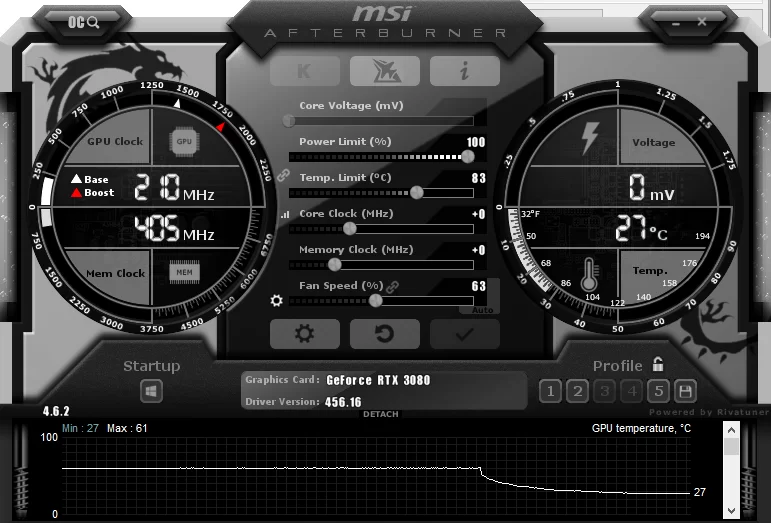

Continue by repeating these same five steps again - if you’ve reached the maximum allowable clock speed, continue to the next section instead.If the Maximum GPU Temperature is at or below the safe maximum temperature (or 90 degrees C), save this configuration as "Profile 2" in MSI Afterburner.Continue by checking the "Maximum GPU Temperature" recorded in MSI Afterburner’s monitoring window. If you do not see artifacts, it means the overclock settings are stable.which indicate the bounds of stress/instability. What you’re looking for are artifacts (or artefacts) - colored lines/shapes or bursts/blips appearing across the screen, blocks or chunks of pixelated/glitchy graphics, colors that are off or incorrect, etc. Low/choppy framerate is normal to see (the program is designed to stress the GPU). Benchmark using Unigine Heaven Benchmark 4.0 and save the benchmark results.(Note: If the chosen user interface/skin shows a slider for Shader Clock, make sure it stays linked with the Core Clock). Using MSI Afterburner, increase the Core Clock by 10 Mhz and then select Apply.Now that you have a baseline, see how far you can overclock the GPU: MSI Afterburner works with practically all video graphics cards from any manufacturer. You’ll use this later when comparing pre- and post-overclock performance. Save (or write down) the benchmark results given by Unigine Heaven.Select Benchmark (upper-left corner) and give the program five minutes to shift through the 26 scenes. Once it’s done loading, you’ll be presented with 3D rendered graphics. Open Unigine Heaven Benchmark 4.0 and select Run.Save this configuration as "Profile 1" (there are slots numbered one through five). Write down the core and memory clock speeds shown by MSI Afterburner.Then exit the properties menu (but keep the program open).

Within that tab, select one of the default skin designs (v3 skin works well) from the drop-down menu. Select the right arrow at the top until you see the tab for User Interface.

If you want a simpler interface to work with, select Settings (gear icon) to open MSI Afterburner’s properties. Just like any good before/after transformation photo, you’ll want to know where your system started prior overclocking. Benchmarks show the progression of improvement through the overclocking process.


 0 kommentar(er)
0 kommentar(er)
